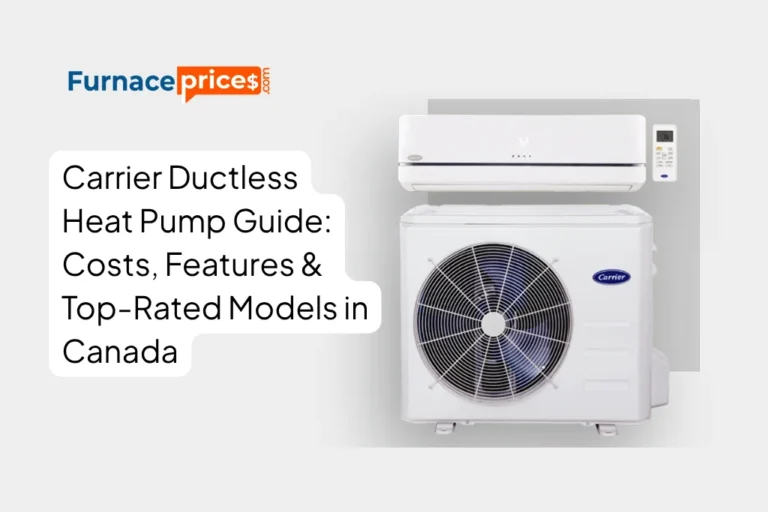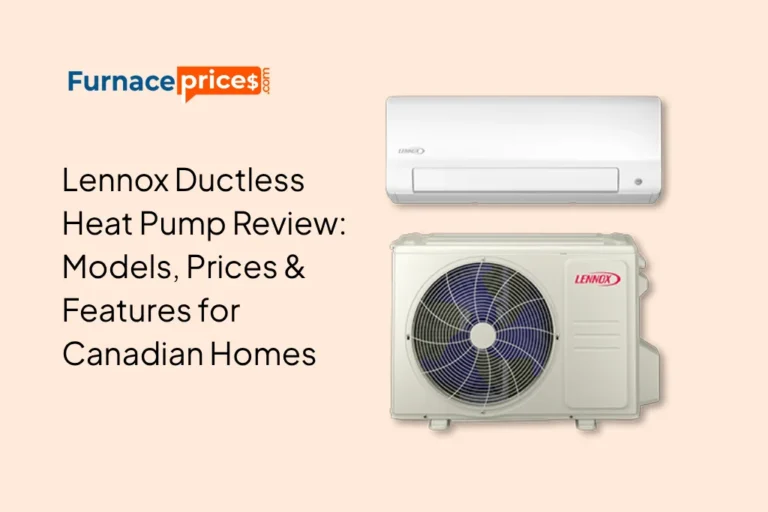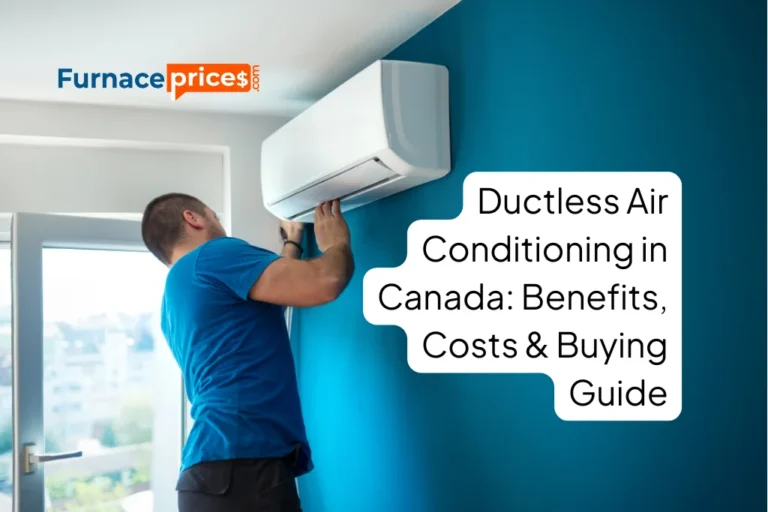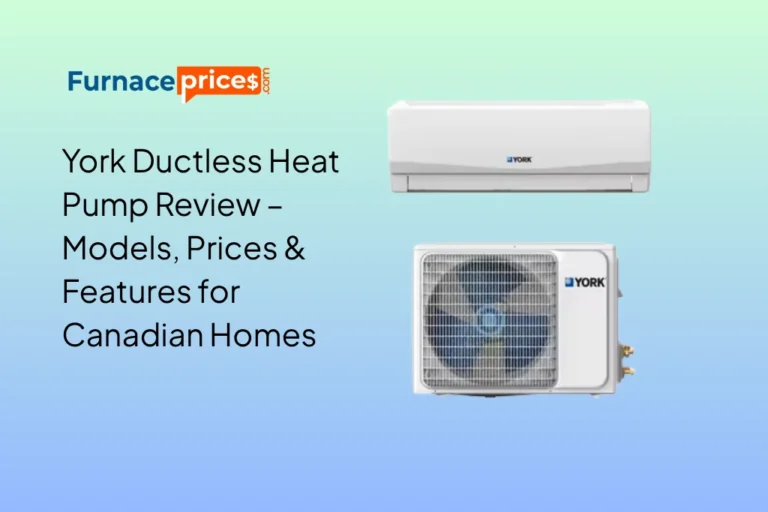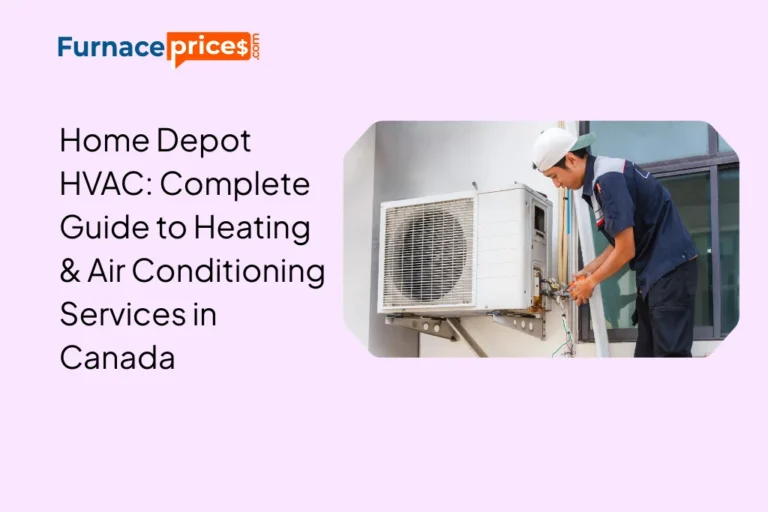ENERGY STAR HVAC Canada – How to Choose High-Efficiency Heating & Cooling Systems
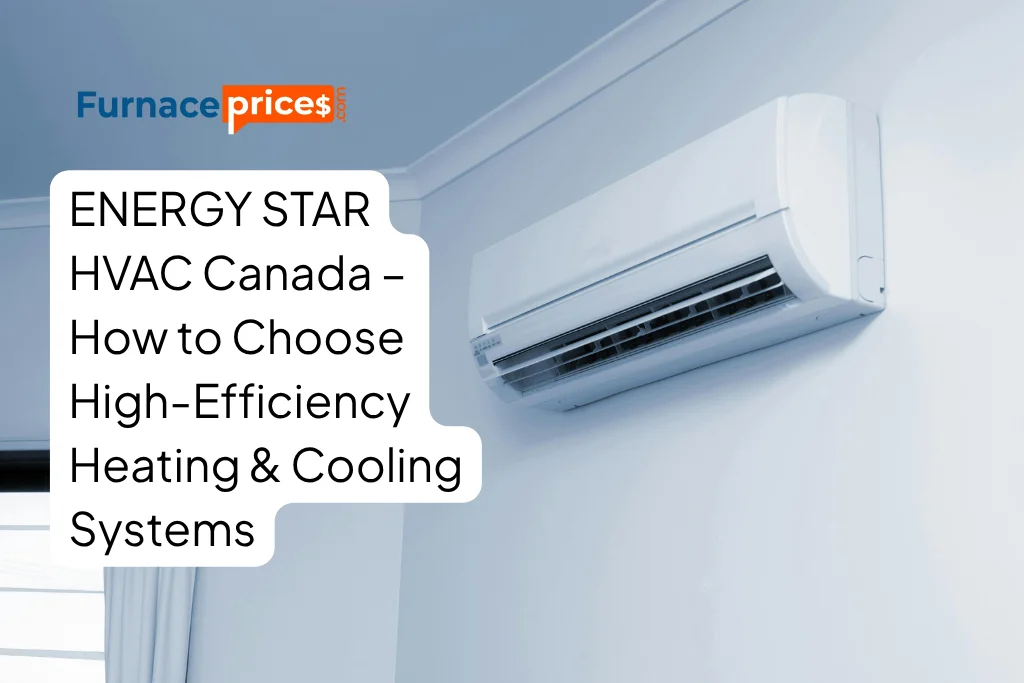
You may have seen the ENERGY STAR® logo on light bulbs, appliances, and HVAC systems and wondered what it really signifies. Essentially, this ENERGY STAR mark indicates that the product meets established energy-efficiency standards. For Canadian homeowners, this means using less energy, reducing utility costs, and making more environmentally responsible choices by choosing ENERGY STAR certified products.
This guide covers the essentials of ENERGY STAR, including its history, certification criteria, advantages, relevance to heating and cooling systems, and answers to frequently asked questions. By the end, you’ll have a clear understanding of how ENERGY STAR products can benefit your home and wallet.
What Is the ENERGY STAR Program?
ENERGY STAR is a voluntary labelling and certification program established in 1992 by the United States Environmental Protection Agency (EPA). Its primary goal is to help consumers easily identify energy-efficient products, making it simpler to make eco-conscious choices.
The program was created to reduce greenhouse gas emissions and promote sustainable energy use by encouraging the adoption of energy-efficient appliances, electronics, and HVAC systems. Initially, it focused on office equipment like computers and monitors, but it has since expanded to include:
- Household appliances
- Electronics
- Heating and cooling systems such as furnaces and air conditioners
- Entire homes
- Industrial and manufacturing facilities
In 2001, Canada joined the program through an agreement between the EPA and Natural Resources Canada (NRCan). Canadian manufacturers seeking ENERGY STAR certification must meet strict eligibility requirements set by NRCan.
A comprehensive list of certified products is available on the Natural Resources Canada website.
The ENERGY STAR Most Efficient Designation
Each year, ENERGY STAR reviews all certified products to identify the highest-performing models in each category. These top products receive the “Most Efficient” designation for that year, providing consumers with guidance on the best-performing and most energy-efficient options.
What ENERGY STAR Means for Canadian Consumers
Over 1,000 Canadian businesses have partnered with NRCan to participate in ENERGY STAR. As a homeowner, this means that participating companies are committed to producing energy-efficient and environmentally responsible products.
The program helps Canadians reduce energy consumption, lower greenhouse gas emissions, and save on utility costs. It also educates consumers on the benefits of choosing energy-efficient products, from appliances to HVAC systems.
Are ENERGY STAR Products Worth the Investment?
ENERGY STAR-certified products often carry a higher upfront cost compared to standard alternatives. This premium reflects better designs, improved materials, and enhanced performance and efficiency.
For homeowners, these products are usually a worthwhile investment due to:
- Energy and cost savings – lower utility bills over time
- Efficiency guarantees – assurance that the product performs as advertised
- Environmental benefits – reduced greenhouse gas emissions
- Access to rebates and incentives – often unavailable for non-certified models
Benefits of ENERGY STAR Furnaces and Air Conditioners
Energy Savings on Heating and Cooling Bills
ENERGY STAR-certified furnaces and air conditioners are designed to operate more efficiently than standard models. For example, a certified gas furnace typically uses at least 6% less fuel than a non-certified equivalent, leading to consistent savings on energy bills over time.
Guaranteed Efficiency and Performance
Buying an ENERGY STAR furnace or air conditioner ensures the unit meets a verified minimum efficiency level and performs as promised. Proper sizing, installation, and maintenance are essential to achieving the maximum energy savings.
Reducing Environmental Impact
Choosing ENERGY STAR-certified HVAC systems also helps homeowners reduce carbon emissions and contribute to climate change mitigation.
Additional Rebates and Incentives
Many provinces, municipalities, utility companies, and even banks offer rebates for ENERGY STAR-certified products, helping offset the higher initial cost. These incentives are often available through:
- Federal, provincial, and municipal programs
- Utility companies
- Local HVAC distributors
- Product manufacturers
Choosing the Right ENERGY STAR Furnace or Air Conditioner
Selecting an ENERGY STAR-certified furnace or air conditioner involves more than just looking at efficiency ratings. It’s important to consider your home’s size, layout, and insulation, as these factors influence system performance and energy savings. For instance, a large, multi-level home may require a higher-capacity system, whereas a smaller bungalow will perform efficiently with a mid-range unit.
Proper sizing is critical because an oversized furnace or air conditioner will cycle on and off frequently, reducing efficiency and increasing wear on components. Conversely, an undersized system may struggle to maintain comfortable temperatures, causing higher energy consumption and uneven heating or cooling. Consulting a licensed HVAC professional ensures the system you choose is correctly sized for your home, maximizing the benefits of ENERGY STAR certification.
Installation Matters
Even the most efficient system won’t perform optimally if it’s not installed correctly. Professional installation ensures that ductwork is properly sealed, airflow is balanced, and the system operates as designed. Poor installation can reduce efficiency by 20% or more, negating the benefits of an ENERGY STAR-certified product.
Additionally, proper installation affects indoor air quality and overall comfort. Correctly installed systems distribute heat and cooling evenly throughout your home, preventing hot or cold spots and reducing strain on the system. Many Canadian homeowners overlook installation quality, but it is one of the most important factors for achieving long-term energy savings and system longevity.
Maintenance Tips for ENERGY STAR HVAC Systems
Maintaining your furnace or air conditioner is essential for preserving efficiency. Regular upkeep includes:
- Filter changes: Replace filters according to manufacturer guidelines, typically every 3–6 months. High-quality MERV 13 or higher filters can enhance indoor air quality while supporting system efficiency.
- Annual inspections: Schedule professional checkups to clean coils, check refrigerant levels, and ensure all components function correctly.
- Ductwork inspections: Leaks in ductwork can significantly reduce efficiency. Sealing ducts improves energy savings and comfort.
- Smart thermostat updates: Keep your smart thermostat software updated to ensure it uses the most efficient algorithms for scheduling and energy optimization.
Following these practices helps maintain the expected energy savings, prolongs the lifespan of your system, and keeps your home comfortable year-round.
Indoor Air Quality and ENERGY STAR Systems
ENERGY STAR-certified HVAC systems not only save energy but also contribute to healthier indoor air. Efficient systems work seamlessly with proper filtration, humidity control, and ventilation strategies. For Canadian homes, where winters can be long and dry, maintaining indoor humidity between 30% and 50% is ideal for both comfort and reducing the survival of airborne pathogens.
Pairing your system with a high-quality HEPA filter or an ENERGY STAR-certified air purifier can further improve indoor air quality. Many homeowners notice fewer dust particles, reduced allergens, and improved comfort when using these systems together. For families with children, seniors, or individuals with respiratory concerns, investing in a high-efficiency system can make a meaningful difference in daily well-being.
Long-Term Cost Savings
While ENERGY STAR products can cost more upfront, the long-term savings make them worthwhile. A certified furnace or air conditioner can reduce energy bills by 6–20% annually, depending on your home and usage patterns. Over the lifespan of the system, these savings often offset the initial investment, especially when combined with available rebates and incentives.
Additionally, ENERGY STAR systems tend to require fewer repairs due to higher-quality components and rigorous testing standards. Reduced maintenance costs, combined with lower energy bills, make certified systems a financially sound choice for Canadian homeowners.
Rebates and Incentive Programs
Canadian homeowners can take advantage of rebates and incentives when purchasing ENERGY STAR-certified HVAC systems. Programs vary by province and utility provider, but common options include:
- Federal and provincial energy efficiency programs
- Utility company rebates
- Manufacturer promotions for high-efficiency units
Before purchasing a new system, it’s worth researching available programs in your area to reduce upfront costs. Pairing these incentives with long-term energy savings makes certified systems more accessible and financially appealing.
Pairing ENERGY STAR Systems With Smart Home Technology
Modern ENERGY STAR HVAC systems often integrate with smart home technology, including Wi-Fi-enabled thermostats and home energy management apps. Smart thermostats allow you to:
- Adjust temperature settings remotely
- Create efficient heating and cooling schedules
- Monitor energy usage in real time
- Receive maintenance reminders
When used effectively, smart thermostats can increase the overall efficiency of your ENERGY STAR system by up to 8%, saving additional money while maintaining comfort.
Understanding Furnace and Air Conditioner Efficiency
AFUE Ratings for Furnaces
Furnace efficiency is measured using AFUE (Annual Fuel Utilization Efficiency). This rating represents the percentage of fuel converted into heat, with the remainder lost as exhaust. For example, a furnace with a 98% AFUE converts 98% of its fuel into heat, wasting only 2%. Higher AFUE percentages indicate more efficient units.
SEER Ratings for Air Conditioners
Air conditioner efficiency is measured using SEER (Seasonal Energy Efficiency Ratio). This metric compares the energy consumed to the cooling output. In Canada, modern air conditioners typically have SEER ratings between 13 and 30, but for most Canadian homes, a SEER of 16–18 balances cost and efficiency effectively.
ENERGY STAR Certification Requirements
To qualify for ENERGY STAR, products must meet specific performance criteria:
- Furnaces must have a minimum AFUE of 95%.
- Air conditioners must achieve a SEER of 15 or higher.
- Units must perform as well as or better than similar products in their class.
- Furnaces must carry a limited manufacturer warranty.
- Rigorous testing ensures reliable performance.
NRCan continuously reviews these standards to keep pace with technological advances, ensuring ENERGY STAR products remain among the most efficient on the market.
ENERGY STAR Certified Thermostats
Many smart thermostats are also ENERGY STAR-certified and can be paired with high-efficiency HVAC systems. A certified thermostat can optimize your furnace or air conditioner to save energy, with potential additional savings of up to 8% on monthly energy bills—roughly $50 annually.
How to Compare HVAC Systems for Efficiency
When choosing a new furnace or air conditioner, consider the following:
- Efficiency ratings (AFUE for furnaces, SEER for air conditioners)
- Proper sizing for your home
- Installation quality
- Maintenance requirements
Combining a certified HVAC system with a smart thermostat maximizes savings and comfort.
FAQ
How do I know if an ENERGY STAR product qualifies for a rebate?
The Government of Canada maintains a searchable directory of incentives. You can search by sector, location, or program type to find eligible rebates.
Are ENERGY STAR-certified furnaces only gas-powered?
No. While most certified furnaces are gas or propane, some oil-powered models also qualify, making them suitable for homes without gas pipelines.
Why should my business pursue ENERGY STAR certification?
Certified products are easier for customers to trust and purchase. Businesses also publicly demonstrate a commitment to sustainability and gain access to partner-only events, marketing tools, and educational resources.
Conclusion
ENERGY STAR provides Canadian homeowners with a reliable benchmark for energy efficiency and environmental responsibility. Choosing certified furnaces, air conditioners, or smart thermostats helps reduce energy bills, limit carbon emissions, and maintain a comfortable home year-round. With potential rebates and long-term savings, ENERGY STAR products are a smart investment for any Canadian household.
Have questions about choosing the best furnace or air conditioner for your home? Our expert-backed guides and trusted contractor directory can help you make an informed decision. Visit FurnacePrices.com today to learn more or request a free quote.
For more information on energy efficiency standards and incentives in Canada, visit Natural Resources Canada.
📞 Have questions? Contact us or email us at contact@furnaceprices.com.
✅ Start comparing today and make the right choice with confidence!


